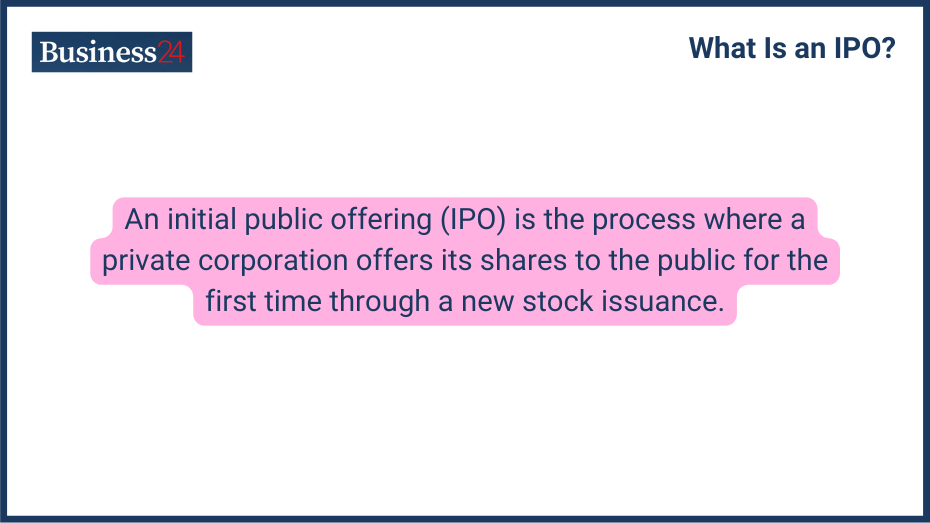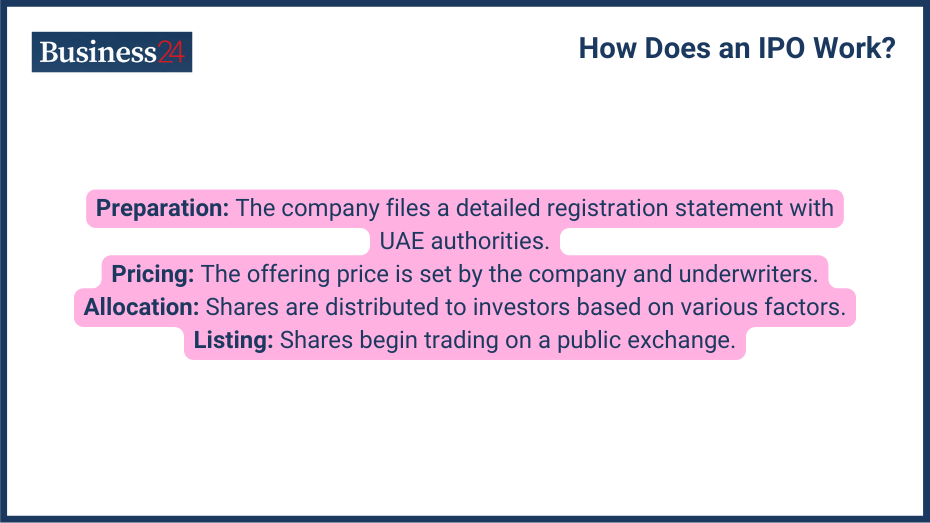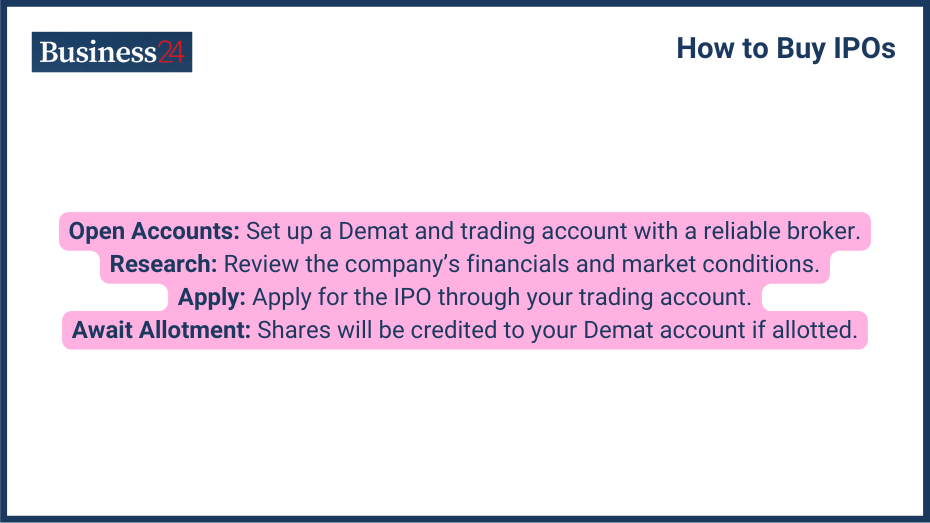
An initial public offering (IPO) is the process where a private corporation offers its shares to the public for the first time through a new stock issuance.
An Initial Public Offering (IPO) is when a private company becomes a public company by offering its shares to the general public for the first time. This transition from a private to a public company allows it to raise capital from investors, which can be used to expand its business, pay off debt, or fund research and development.
IPOs have been a popular method for companies to raise capital for centuries—the first recorded IPOs date back to the 16th century in the Netherlands. Since then, IPOs have evolved and become a common practice in the global financial markets. The number and size of IPOs have increased significantly in recent decades as companies have sought to raise capital to fund growth and expansion.
How Does an IPO Work?

The IPO process begins with the company working with investment banks to determine the price and number of shares to be sold. Before going public, the company must file necessary documents with regulatory authorities like the SEC detailing its financials and business model. Once approved, the shares are listed on a stock exchange, and investors can buy them, providing the company with capital to expand. This process also allows the original owners and early investors to potentially sell their stakes for a profit.
The IPO process typically involves several steps:
- Preparation: The company prepares a registration statement with the UAE’s governmental authority. This statement includes detailed information about the company’s financials, business operations, and management team.
- Pricing: The company and its underwriters determine the offering price for the shares. This is typically done based on the company’s financial performance, market conditions, and investor demand.
- Allocation: The underwriters allocate the shares among investors. This process can be competitive, and not all investors may be able to obtain the desired number of shares. The underwriters will allocate the shares based on various factors, including the investor’s size, investment history, and relationship with the underwriter.
- Listing: The company’s shares begin trading on a public stock exchange. Once listed, investors can buy and sell the company’s shares freely.
How to Buy IPOs

To buy IPOs, you’ll need to follow these steps:
1. Open a Demat and Trading Account: A Demat account is required to hold shares electronically, while a trading account allows you to buy and sell shares. You can open these accounts with a registered broker. Select a reliable brokerage firm that offers IPO services. When choosing a broker, consider factors such as fees, services, and reputation.
2. Research the IPO: Thoroughly research the company’s financials, business model, industry prospects, and IPO pricing. Assess market conditions and compare the company’s valuation to similar companies.
3. Apply for the IPO: Log in to your trading account and select the IPO you want to invest in. Enter the desired quantity of shares and price.
4. Await Allotment: The allotment process may take a few days. If allotted, the shares will be credited to your Demat account. Once listed, you can buy or sell the shares in the secondary market.
Advantages And Disadvantages Of IPO
Advantages of IPOs:
- Access to Capital: IPOs allow companies to raise significant amounts of capital, which can be used to fund growth, expansion, and other strategic initiatives. This capital can be used to invest in new products or services, enter new markets, acquire other companies, or pay off debt.
- Increased Visibility: Going public can increase a company’s visibility and brand recognition. This can lead to increased customer awareness, sales, and market share. When a company goes public, it becomes more widely known and can attract new customers and investors.
- Exit Strategy: An IPO can allow existing shareholders to exit their investments and realize a profit. This can be particularly beneficial for early investors who have seen the company grow significantly.
- Employee Compensation: IPOs can be used to offer employees stock options as part of their compensation packages. This can help align employees’ interests with the company’s shareholders and incentivize employees to work hard to increase the company’s value.
Disadvantages of IPOs:
- Increased Scrutiny: Public companies are subject to increased regulatory scrutiny and reporting requirements, which can be time-consuming and expensive. They must comply with various regulations related to financial reporting, corporate governance, and insider trading.
- Loss of Control: Going public can dilute the control of existing shareholders. Once a company is public, its shares are traded on a public stock exchange, and any investor can buy or sell the shares. Existing shareholders may have less control over the company’s decisions and operations.
- Market Volatility: The stock price of a newly listed company can be highly volatile, making it difficult to predict its performance. The stock price can fluctuate significantly in the early days and weeks after an IPO. This volatility can create uncertainty for investors and increase the risk of losing money.
Performance of an IPO
The performance of an IPO can vary widely, depending on several factors. Some IPOs are highly successful, with the stock price soaring after the listing. Others may underperform or even decline in value.
Here are some key factors that can influence the performance of an IPO:
- Company fundamentals: The company’s financial health, business model, and growth prospects are crucial to its performance.
- Market conditions: The overall market environment, including interest rates, economic indicators, and investor sentiment, can significantly impact IPO performance.
- Pricing: If the IPO is priced too high or too low, it can affect its performance.
- Investor demand: The level of investor demand for the IPO can influence its initial price and subsequent trading.
- News and events: Positive or negative news and events related to the company can affect its stock price.
What Are The IPO Alternatives?
Here are some of the common alternatives to IPO:
- Private Equity: Raising capital from private investors can be a viable alternative to an IPO. Private equity firms invest in companies in exchange for a stake. This can provide companies access to capital without the increased scrutiny and regulatory burdens associated with going public. Private equity firms can also provide valuable guidance and support to help companies grow and succeed.
- Debt Financing: Companies seeking to raise capital can borrow money from banks or other lenders. Debt financing can be a less expensive and risky alternative to an IPO. However, it is important to carefully consider the loan terms and the interest rate before taking on debt.
- Mergers and Acquisitions: Combining with other companies can strategically raise capital or expand operations. They can also provide companies with access to new markets, customers, and technologies. However, they can be complex and time-consuming, and there is no guarantee that they will be successful.
Factors To Consider Before Investing In An IPO
Here are some points to keep in mind before investing in an IPO:
- Research the Company: Thoroughly investigate the company’s financials, business model, management team, and industry prospects. Analyze the company’s competitive position, growth potential, and risk factors.
- Analyze IPO Pricing: Evaluate whether the offering price for the IPO is fairly valued. Compare the company’s valuation to similar companies in the industry. Also, check overall market conditions and investor sentiment. A strong market can increase the demand for IPOs, while a weak market may make it more difficult to sell the shares.
- Risk Tolerance: Evaluate your risk tolerance before investing in an IPO. IPOs can be highly volatile, and you may lose your investment. If you are still deciding whether to invest, consider consulting with a financial advisor who can provide guidance and advice.
FAQs
Q. What is the difference between an IPO and a secondary offering?
A. An IPO is the initial sale of a company’s shares to the public, while a secondary offering is the sale of additional shares by a company that is already public.
Q. How can I invest in an IPO?
A. To invest in an IPO, you typically need to open an account with a brokerage firm participating in IPO allocations. You may also need to submit a subscription form and provide information about your investment preferences.
Q. What factors influence the success of an IPO?
A. The success of an IPO is influenced by various factors, including the company’s financial performance, market conditions, and investor demand.
Q. What are the risks and rewards of investing in IPOs?
A. IPOs can be risky, as there is no guarantee that the stock price will increase after the listing. However, they can also offer the potential for high returns.
Q. How can I research potential IPOs?
A. You can research potential IPOs by reading company prospectuses, analyzing financial statements, and following industry news.
Disclaimer
eToro is a multi-asset platform which offers both investing in stocks and cryptoassets, as well as trading CFDs.
Please note that CFDs are complex instruments and come with a high risk of losing money rapidly due to leverage. 51% of retail investor accounts lose money when trading CFDs with this provider. You should consider whether you understand how CFDs work, and whether you can afford to take the high risk of losing your money
This communication is intended for information and educational purposes only and should not be considered investment advice or investment recommendation. Past performance is not an indication of future results.
Copy Trading does not amount to investment advice. The value of your investments may go up or down. Your capital is at risk.
Don’t invest unless you’re prepared to lose all the money you invest. This is a high-risk investment and you should not expect to be protected if something goes wrong. Take 2 mins to learn more
eToro USA LLC does not offer CFDs and makes no representation and assumes no liability as to the accuracy or completeness of the content of this publication, which has been prepared by our partner utilizing publicly available non-entity specific information about eToro.
